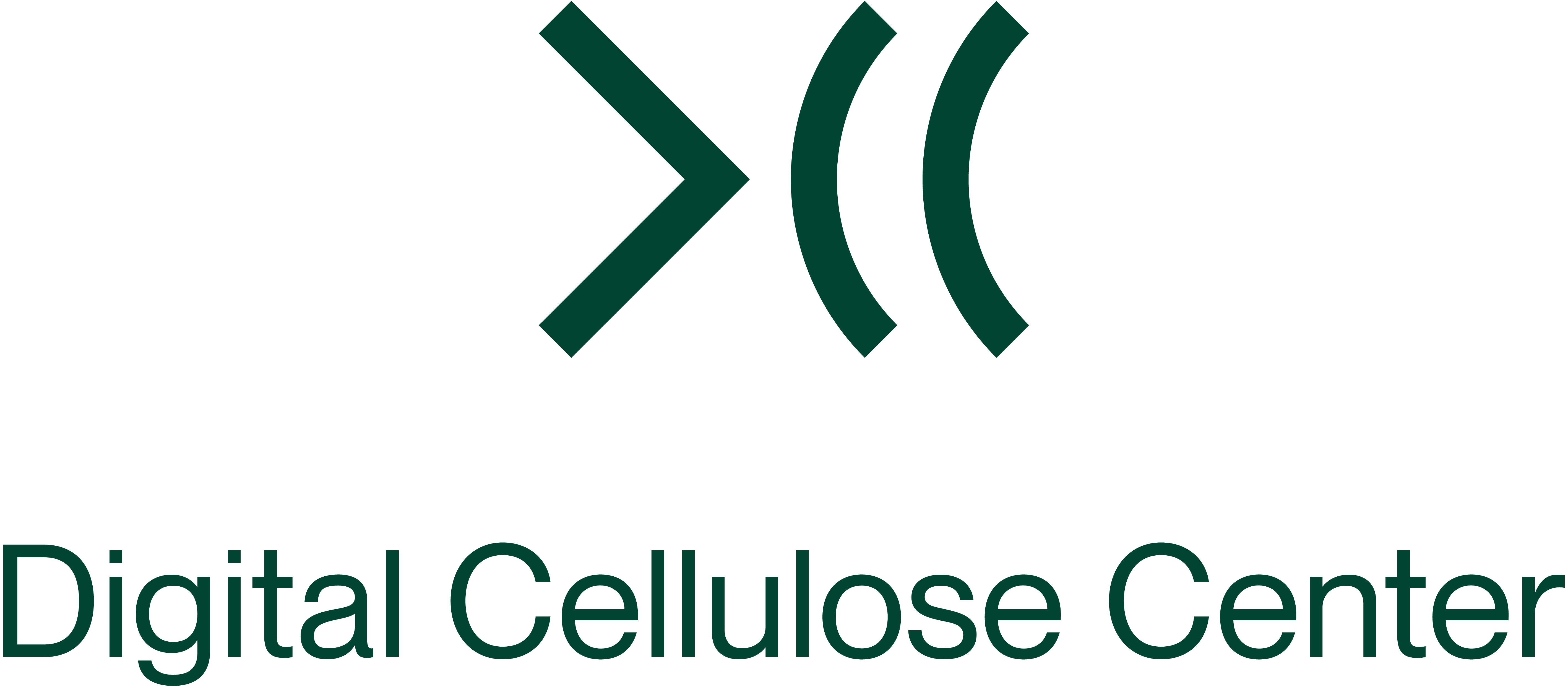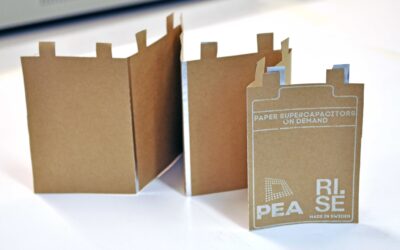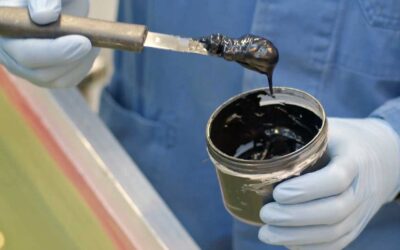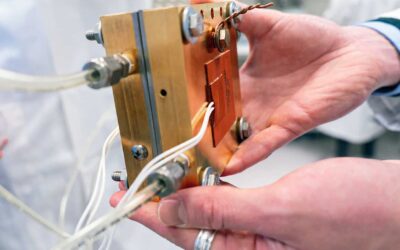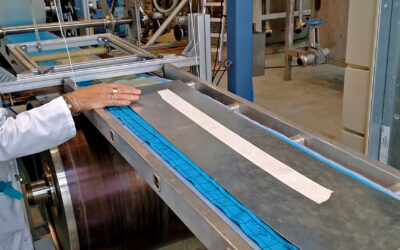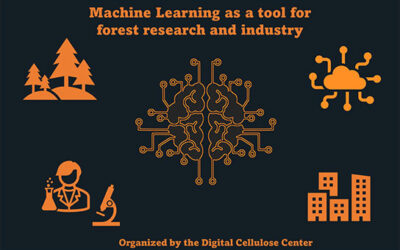Blog
New industrial partners within flow batteries: Cellfion, Rivus, and Redox.me
The Digital Cellulose Center is proud to announce that the companies Cellfion, Rivus, and Redox.me have joined the Center as new industrial partners. They will contribute to the research and development of sustainable energy storage solutions, focusing on flow batteries.“The increased production of electronics and the energy crisis highlights the urgency for new sustainable solutions to store energy,” says Ursula Hass, Centre Director at Digital Cellulose Center. “Exciting new research within...
Clean energy – Osmotic energy generator with nanocellulose membrane
Researchers within the Digital Cellulose Center have found a new way to create clean energy by developing cost-effective and recyclable nanocellulose membranes for osmotic energy generators. The developed proof-of-concept osmotic power generators based on the new membranes show high power density and long-term working stability. Hongli Yang is a doctoral student at the Digital Cellulose Center. Her latest research is within osmotic energy - a renewable energy form generated from salinity...
Paper battery – Renewable energy storage for buildings
Researchers from the Digital Cellulose Center have developed a paper supercapacitor that can store renewable energy on a large scale. New research shows that the energy storage capacity of the paper battery is as efficient as conventional commercial supercapacitors. In the future, the energy storage device could be used in the construction of buildings to store energy on-site sustainably as well as insulate it."The energy demand will only increase, and we need new technologies to store...
Conductive organic ink – promising for storing solar energy
A new study from the Digital Cellulose Center demonstrates a method of printing sustainable, large-scale supercapacitors using cellulose, conducting polymers and carbonaceous materials. The new material shows promise for solar energy storage. Compared to previous findings, this method reduces costs by 90 percent while the capacitance was increased by 40 times.The new study from researchers within the Digital Cellulose Center shows that the combination of cellulose, PEDOT:PSS and carbon...
The DCC’s Vinnova evaluation: “Pioneering excellence and potentially revolutionary”
Vinnova has made a directional decision to continue financing The Digital Cellulose Center (DCC) for another five years. The Vinnova five-year evaluation states: “The pioneering excellence of the DCC is promising and potentially revolutionary for the forest sector.” “We are all within DCC really happy about the positive result from Vinnova and the international evaluation group, and that they are highlighting the promising impact of the digital transformation”, says Centre Director Ursula...
Conferences: Join the Digital Cellulose Center at MRS
Join the Digital Cellulose Center during the Spring conferences MRS, NGPT, and Treesearch. The Digital Cellulose Center’s researchers will share the Center’s latest studies on combining forest materials with electroactive materials to create green electronics and digital solutions for a sustainable future. Materials Research Society (MRS) Spring Meeting & Exhibit Honolulu, Hawaii - May 8-13 and online - May 23-25Information and registrationDiscover the very latest developments in materials...
Bio-based membrane for hydrogen fuel cells – the DCC spinoff Cellfion
Bio-based membrane technologies developed by the Digital Cellulose Center have laid the foundation for the startup company Cellfion. In the future, their nanocellulose membranes will enable the fabrication of renewable energy storage devices, like hydrogen fuel cells and redox flow batteries, as well as replace the current non-renewable membranes on the market.The bio-based membranes from Cellfion are made of nanocellulose fibrils, a renewable material extracted from wood. The ion-selective...
New energy-efficient and low-cost method for making nanocellulose films
RISE researchers have developed a new low-cost method for manufacturing nanocellulose films, based on the Digital Cellulose Center’s research. The bio-based material can replace plastics in many products as well as be used in energy storage devices. By using suction and pressing instead of heat to remove water from nanocellulose mixtures, the energy consumption and costs can be reduced by more than 95 percent. A new pilot study conducted by researchers at RISE Research Institutes of Sweden...
Low-cost cellulose-based membrane can be used in energy harvesting devices
Hongli Yang is a doctoral student at the Digital Cellulose Center, and with her latest research, she has created a highly conductive, low-cost nanocellulose-based ionic membrane. The new membrane is promising for electrochemical energy technology, such as redox flow batteries. The abundant natural resource of cellulose, combined with a simple production process makes the new membrane low-cost compared to the current commercial non-biodegradable membrane.The research within the Digital...
AI and Machine Learning as a tool for forest research and industry
How can Machine Learning (ML), Deep Learning (DL), and Artificial Intelligence (AI) be used as a tool within forest industry and research? This seven-part, university-accredited course, starting February 28th, is organized by the Digital Cellulose Center and aims to provide the necessary background and theory for researchers in academia and industry to understand how ML can benefit their work. These powerful emerging digital tools are being utilized in an ever-expanding set of applications....
